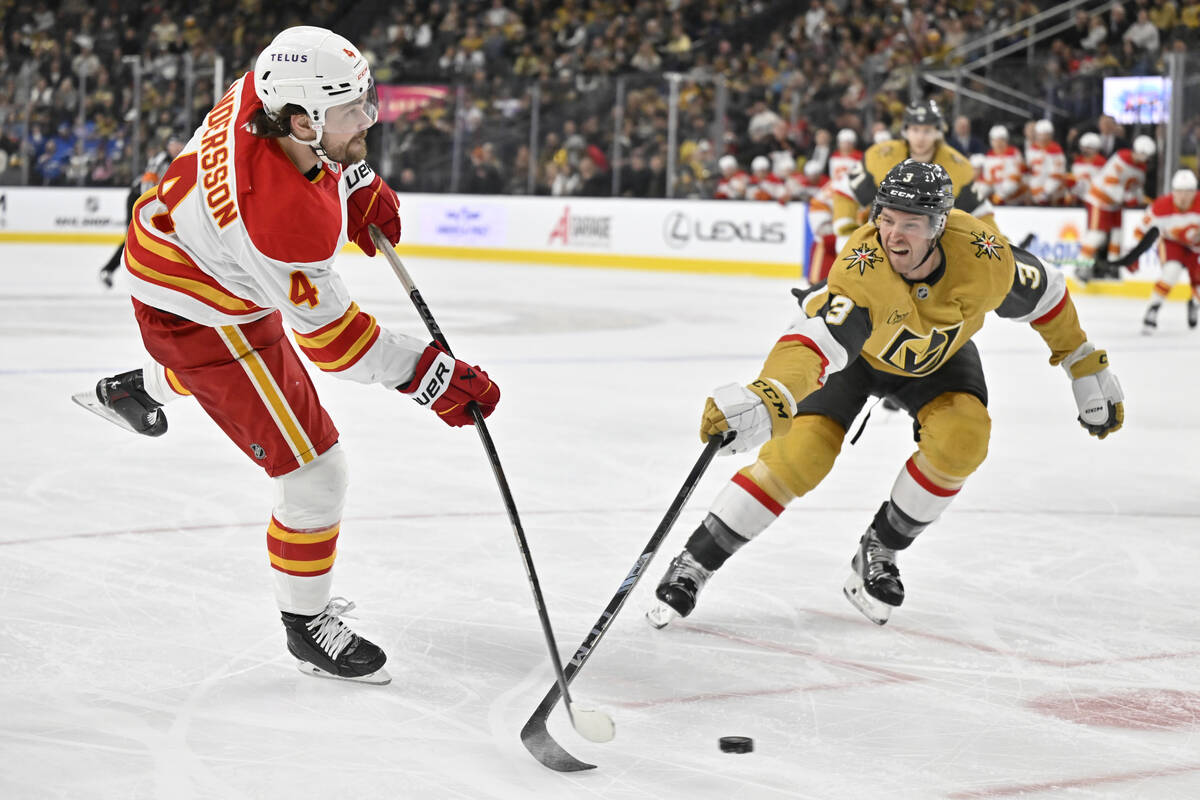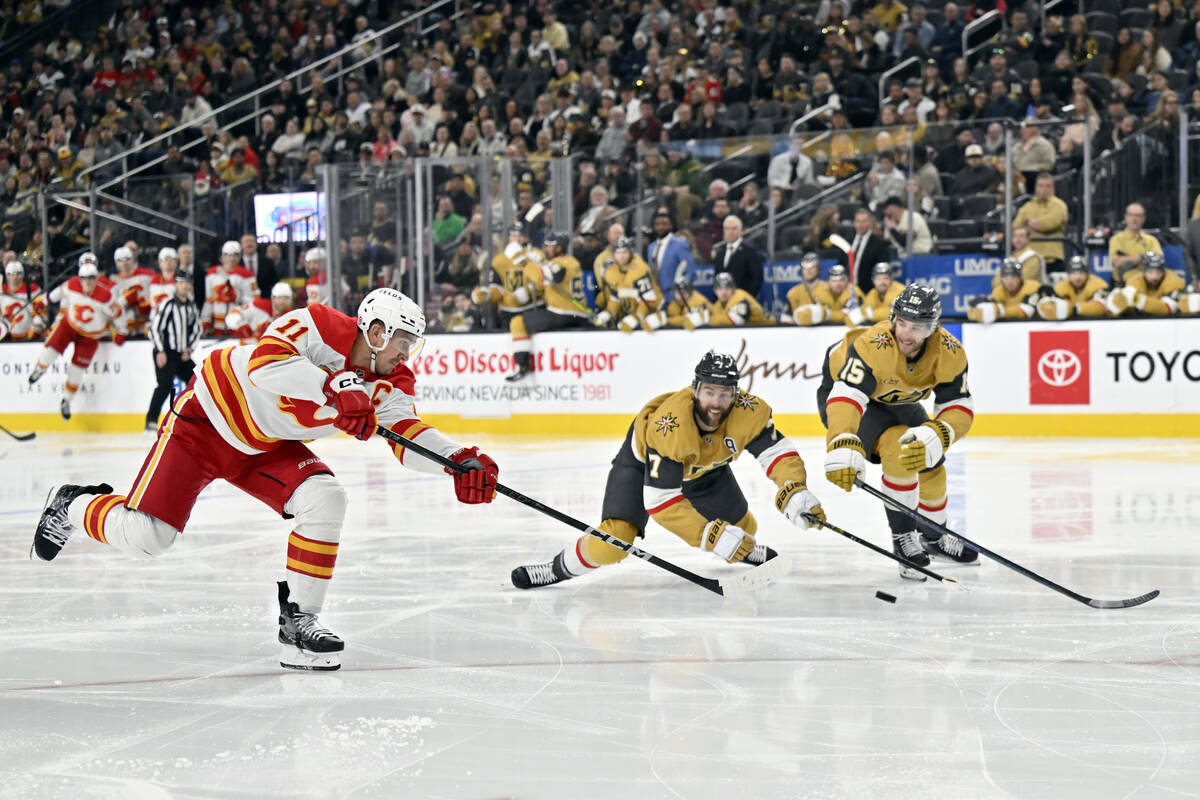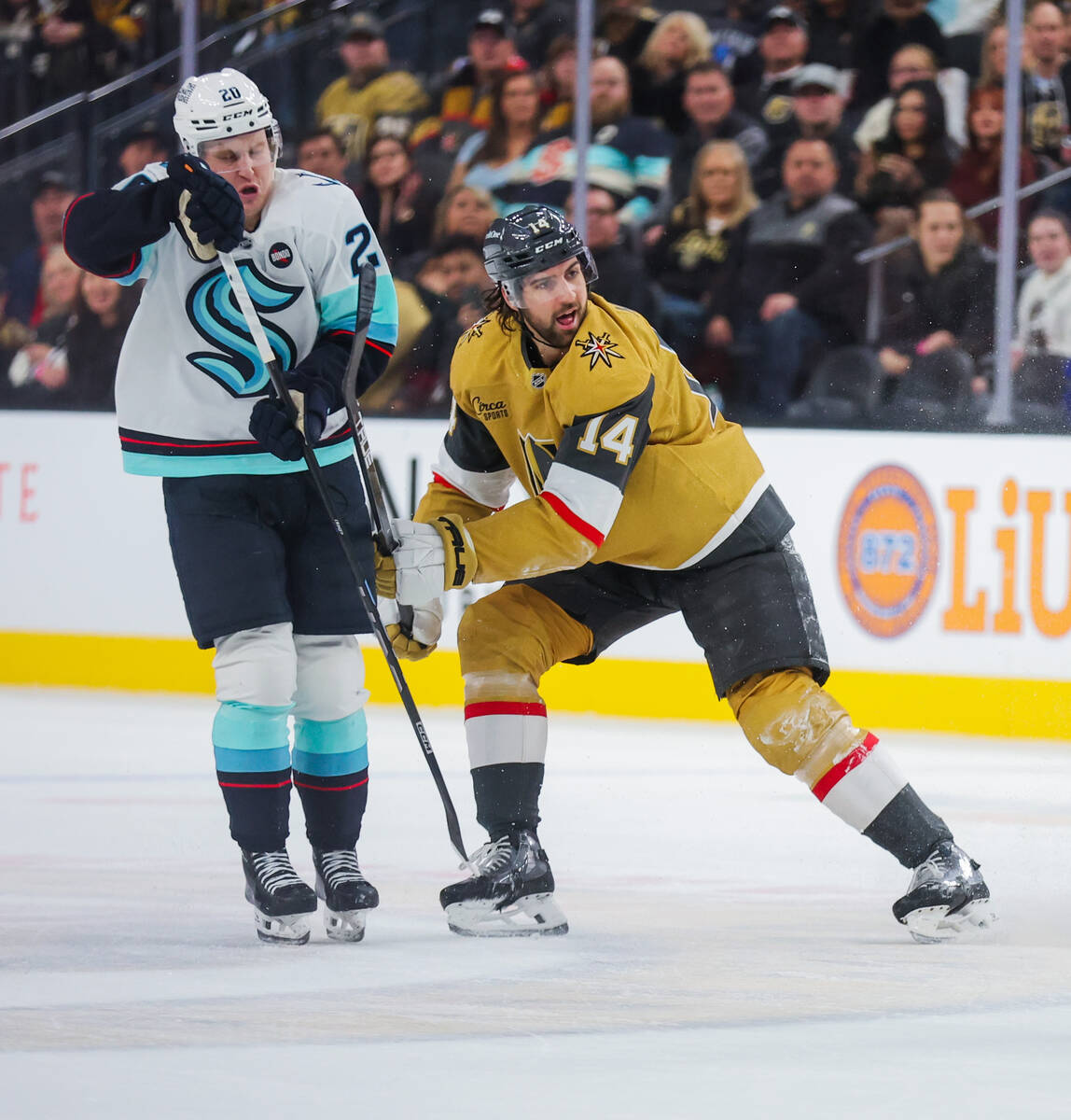Knights’ special team adjustments paying off: ‘It’s been working so far’
Golden Knights coach Bruce Cassidy and assistant John Stevens met at one point this season to adjust the team’s penalty kill.
The pair’s initial talks were about marrying the Knights’ defensive responsibilities at five-on-five and while short-handed. That was the primary goal, along with adding a few wrinkles.
Then they talked about what the Knights could do up the ice. How aggressive the forwards could be to try to shut down the opposing power play at the blue line.
Cassidy termed it “controlled aggression” or “appropriate pressure.”
Whatever the phrase, it’s working. It’s helped the Knights have one of the NHL’s best penalty kills over the last month.
“I feel, as a coach, the less time you spend in your end on the PK, however you do that, the more successful you’ll be,” Cassidy said. “That’s what we’re trying to accomplish more with that.”
The penalty kill has always been a point of emphasis for Cassidy, but the Knights’ results haven’t been stellar most of his tenure.
The team ranked 19th (77.4 percent) his first season in 2023-23. It jumped to 16th (79.3 percent) in 2023-24.
The Knights’ overall numbers look similar this season. They rank 14th in the league (81 percent). But that doesn’t account for the rapid progress they’ve made as the campaign has gone on.
The Knights were tied for 25th on the penalty kill with the Calgary Flames through their first 21 games (75 percent). They’re fifth since (88.6 percent), giving up just four power-play goals in that span while scoring four times short-handed.
They’ve killed penalties and made teams pay going the other way.
“It’s a key part of the game,” defenseman Brayden McNabb said. “A key part of team success.”
Power kill
Cassidy said the Knights’ penalty kill has focused on being aggressive when teams try to enter the offensive zone. They don’t want to just retreat and skate backwards. They want to stop their opponent at the blue line.
One way the Knights have done that is with the forwards they’re using on the kill.
Cassidy’s first unit typically features centers William Karlsson and Jack Eichel, two of the team’s fastest and most responsible players. They can disrupt plays without getting lost in coverage and read off each other well.
“Two guys being aggressive, try to interrupt them as soon as possible,” Karlsson said. “We just get into our formation on the blue line and push them outside. It’s been working so far.”
Key kill Sunday
The Knights’ new approach on the penalty kill was tested in the first period Sunday against the Flames.
Calgary was on the power play at one point for 4:53 — including having a five-on-three advantage for 1:07 — thanks to a tripping penalty on center Tanner Laczynski and a high sticking double minor on center Brett Howden.
The Knights didn’t blink. Goaltender Ilya Samsonov made five saves and the team’s skaters blocked five shots as part of a 3-0 shutout win.
“I give a lot of credit to the coaching staff here and my teammates helping me develop into the player I am today,” said Eichel, the first forward over the boards for the five-on-three. “I’m taking more pride in my defensive game and the ability to help the team in other ways, other than scoring goals and getting assists. I’ve made it more a priority to be more effective on the penalty kill and defensively.”
Montreal up next
The penalty kill’s success is a key reason why the Knights have a six-game winning streak and are 10-1 in December.
They’ll try to close out the month with another win Tuesday at home against the Montreal Canadiens, who are 5-1 in their last six games. The Canadiens have scored on 27.8 percent of their power plays in that stretch.
The game will be another great test for the Knights. Left wing Patrik Laine is tied for the third-most power-play goals in the league with eight despite only playing in 12 games. Left wing Cole Caufield is right behind Laine with seven power-play goals.
“If (the penalty kill) results in a little offense for us, awesome,” Cassidy said. “If it disrupts their group and they get a little frustrated, that’s probably the end goal is to keep them out of our end and get them talking to themselves a little bit.”
Contact Danny Webster at dwebster@reviewjournal.com. Follow @DannyWebster21 on X.


























